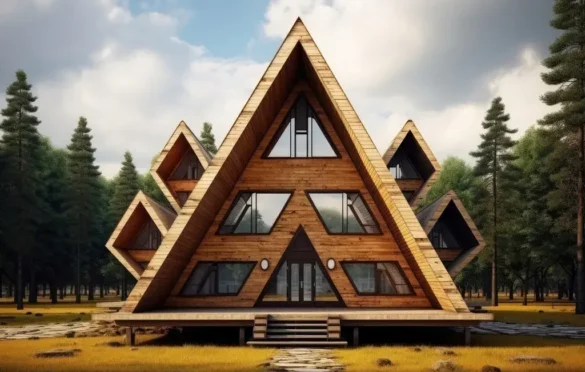Explore this post with:
A city’s character can be molded in a plethora of parameters—its culinary landscape or a multitude of shopping spots. Yet, nothing quite stamps a city with its unique identity like its architecture. The visual blueprint of a city, whether shaped by deliberate city planning or influenced by cultural shifts, can whisk you through history while firmly grounding you in a specific location.
Each city evolves to serve its residents’ needs. However, the most modern cities share a consistent vibe and flair. Beyond their contemporary buildings or economic dynamics, they continue to attract people, remaining desirable places to live. Need proof? Here are the top 7 cities around the globe celebrated for their architecture, spanning from Copenhagen to Singapore.
Singapore

Often hailed as a model smart city, Singapore stands as a perfect example of urban planning and innovative technology. Contemporary architecture in Singapore prioritizes sustainability, showcasing numerous instances of incorporating lush greenery into skyscrapers. Given its humid climate, emphasizing green architecture and ventilation, holds Its advanced public transportation system, driven by smart sensors and data analytics, ensures efficiency and connectivity for its residents. From automated waste management to the extensive use of biometrics in public services, Singapore harnesses technology to enhance various aspects of urban living and everyday life. This collection of projects and events portrays a youthful nation with a colonial history, steering towards its distinct architectural style.
Seoul

The city stands as a testament to South Korea’s tech prowess, renowned for its tech-savvy populace and high-speed internet connectivity. Smart infrastructure, including IoT-integrated systems for energy efficiency and public safety, underscores Seoul’s commitment to technological integration. The city’s embrace of innovation permeates various sectors, from entertainment to healthcare. Lately, Korean architects have been adding super modern and taller buildings to the city’s skyline. But Seoul’s skyline is a mix of all sorts; there are tall glass buildings, sturdy concrete blocks, and even some curvy and free-flowing designs in modern and contemporary styles.
Riyadh

In recent years, Riyadh, the capital of Saudi Arabia, has seen a surge in smart city projects, leveraging technology to enhance urban life. The city has invested in metro systems and intelligent transportation solutions to reduce traffic congestion and enhance mobility. Riyadh marks its place among cities shaping the future, where technology seamlessly intertwines with urban life.
Saudi Arabia is making big moves to become a center for global design and architecture. They’ve kicked off ambitious mega projects that are changing the kingdom’s urban scenery. These include everything from futuristic cities using AI to stunning cultural hubs, lavish getaways near ancient sites, and massive transportation systems. Saudi Arabia is using top-notch design and forward-thinking architecture to bring in a new age of advancement and creativity.
For example, this article explains what “The Line” in Saudi Arabia is, an incredible upcoming project in Riyadh.
Tokyo

A bustling metropolis pulsating with innovation, Tokyo is a worldwide icon of futuristic advancements. It boasts high-speed trains, such as the Shinkansen, revolutionizing transportation, while robotics and artificial intelligence find applications in everyday life, from customer service to elderly care. Tokyo’s commitment to technological integration positions it at the forefront of modernity.
Tokyo keeps breaking architectural limits while keeping its Japanese style. It’s a hotspot for design buffs. Whether it’s glass structures, detailed patterns, or colorful doorways, everyone loves capturing Tokyo’s coolest buildings.
Copenhagen

A beacon of sustainability, Copenhagen combines technological innovation with environmental consciousness. Its emphasis on renewable energy sources, smart grids, and bike-friendly infrastructure illustrates a harmonious blend of technology and eco-friendliness, setting a precedent for modern cities striving for sustainability.
Stockholm

This Swedish city shines for its digitalization and innovation. Stockholm fosters a vibrant startup culture and invests heavily in research and development. With a focus on smart transportation, digital governance, and sustainable solutions, Stockholm is known for being a modern, tech-driven city. Stockholm sits between Lake Mälaren and the Baltic Sea, boasting a mix of modern and old-style buildings that go way back to the 13th century.
Swedish architecture flaunts bold shapes and colors. Thankfully, these iconic structures dodged the wrecking ball during World War II, unlike many others in different capitals.
Hong Kong

A true symbol of finance and technology, Hong Kong boasts a dynamic ecosystem of technological innovation. When we think of “Hong Kong,” the mind jumps straight to its amazing skyline. The city is famous for its super-tall skyscrapers, blending modern styles with old colonial and Chinese architectural designs. The city’s skyscrapers are not just architectural feats but hubs of technological integration, facilitating efficient urban living and business operations.
Conclusion
Building contemporary metropolises and cultural landmarks requires a fusion of contemporary and historic architecture. Cities must be able to adapt and evolve while retaining their own identity when modern architecture works in tandem with older structures. Not only does this blend preserve historic structures, but it also spruces up urban areas while conveying fascinating tales about their history. Architectural hybrids are like an endless saga of human ingenuity and perseverance. The goal is to create places that reflect the spirit of the utopian present while preserving historical references that may bring people together from various eras.
Explore Further:
About the Author: Nishant Desai
Nishant Desai has over 8+ years of experience in SEO and blogging. His blogging expertise can organically increase online visibility and traffic for blogs and websites. With his SEO expertise, he has already contributed to iGeeksblog, Firstsportz, and Firstcuriosity. In addition, he can create content strategies, conduct keyword research, publish optimized blogs, and resolve technical issues.




